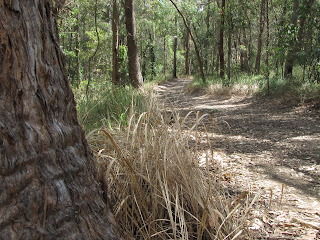Alan imparted his great knowledge and experience of taking photographs of the bush in a highly enthusiastic and engaging rapid fire hour. As a very keen amateur who has never had any instruction or been brave enough to move off the auto functions, this was something of a revelation! A big thing for me was to learn more about depth of field, which I now know is tied to the camera's aperture. Manipulating the depth of field using the aperture can give some great effects and ultimately much better photos, such as that nice fuzzy background to portraits, so the eye is really drawn to the subject. This works in combination with focal length and focus. Equally, you can use the aperture settings to ensure you get as much as possible in focus, by using a large depth of field. The confusing thing is that a large depth of field equates to a small aperture (e.g. f/22), and a small depth of field (more restricted focus) equates to a large aperture (e.g. f/4.5)! Here are a couple of examples of photos I tool at the workshop with a small aperture, set at aperture value F8.0, which has meant that the picture has stayed focused on both the close up of the tree and the path disappearing into the distance. I used 'Av' mode on my camera to set the aperture, so that the camera would automatically adjust the other settings like shutter speed.
The Pied Butcherbird is probably the most beautiful singer of all the Australian birds, You can hear a beautiful example of the song below, as I often do when I wake up in the morning.




No comments:
Post a Comment